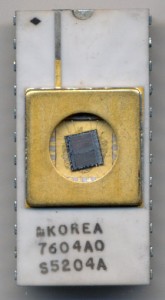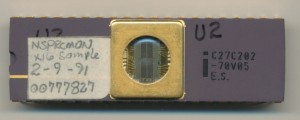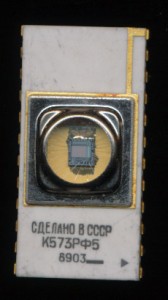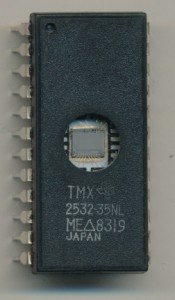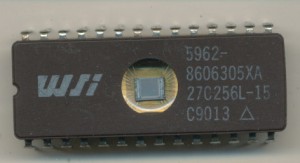2012: Year in Review: UV EPROMs
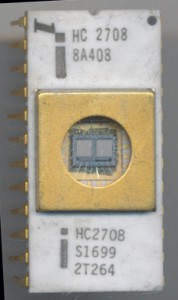
Unusual double marked Intel HC2708. Intel used ‘H’ for a brief time to denote a windowed DIP package.
UV-EPROMs are a technology made obsolete in an incredibly short period of time by widely available, and more flexible, Flash and EEPROM technology. Processors evolved, DRAM and SRAM evolved, EPROMs simple ceased to exist. There were attempts to make them faster, lower-power, or in more convenient packages, but at the end of the day (or the end of the 90’s) shining a UV light into a small round window to erase them simply became a sign of an era long passed. That window, however, also allows for the beauty and in some cases massiveness, of their silicon dies to be seen by all, something today’s black plastic flash simply cannot do.
Here are a few of the interesting EPROMs I found in 2012 (click to enlarge)
AMI made many custom chips for clients, as well as second sourced various designs. This is a S5204A, a copy of the National Semiconductor MM5204. Made in 1976 it stored 4kbits and had a ‘fast’ access time of only 750ns. It could be fully programmed in ‘less then a minute’ and took ‘only’ 10 minutes to erase all 4096 bits. Power draw was 750mW max, about the same as a 800MHz Intel Atom processor.
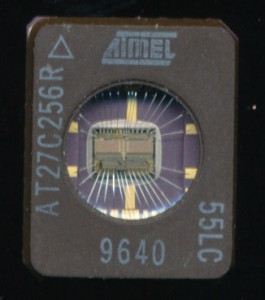
The Atmel AT27C256R-55LC was a CMOS 55ns 256kbit EPROM in a surface mount package. Made in late 1996 it was the beginning of the end for EPROMs.
Intel used some unusual packages for a few of their EPROMs. This package was more commonly used on things like C8751s. Here it is a C27C202-70V05 Engineering Sample. This is a 2Mbit EPROM.
No EPROM collection is complete without at least a few examples of Soviet EPROMs. If anything for their amazing packages. Here a Soviet of unknown plant K573RF5 made in 1989. This is a clone of the Intel 2716.
The Soviet bloc mastered making EPROMs with plastic packages, but this never caught on in the western market. I have never seen a production EPROM in a plastic package out side of East German/USSR. However I did acquire a plastic TI TMX2532-35NL. TMX denotes it as a prototype.
The military and industrial markets continued to use EPROMs far longer then the commercial/consumer markets. Cost being less of a concern then reliability. EPROM’s had a proven track record and thus were used until Flash had proven itself. This is a Waferscale Integration (WSi) 27C256L-15 mil spec EPROM.
Posted in:
EPROM of the Day


